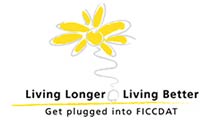Toronto Declaration on Bridging Knowledge and Practice in Aging and Disability
April 26, 2012
![]() https://www.confmanager.com/main.cfm?cid=1793
https://www.confmanager.com/main.cfm?cid=1793

|
| Download |
|
|
The Toronto Declaration on Bridging Knowledge, Policy and Practice in Aging and Disability was released on March 30, 2012, by Dr. Luis Salvador-Carulla at an event at the Administration on Aging. The Declaration was authored by an international work group on aging with disability, which included Tamar Heller, PhD, of the Institute on Disability and Human Development (IL UCEDD), and Barbara LeRoy, PhD, Developmental Disabilities Institute (MI UCEDD).
The goal of the Declaration is to raise awareness of bridging issues between aging and disability and promote the recommendations it contains.
From the Toronto Declaration
"...in the years ahead disability will be an even greater concern to developed and developing nations due to aging populations, higher risk of disability in older people, as well as the global increase in chronic health conditions, such as diabetes, cardiovascular disease, cancer and mental health disorders. Taken together, the dual phenomena of global aging and increased longevity for individuals with disabilities represent significant advances in public health and education.
"...Bridging the fields of aging and disability research, policy, and practice is critical for meeting the challenges of the 21st century. All of us aspire to healthy aging, regardless of the presence of age-related impairments or disabling conditions. The experience of growing older with a disability and growing older into a disability may differ - in part because of the different dynamics of ageism and ableism and the differences in economic and social conditions that result - but these life course trajectories present similar challenges and opportunities. In this document we seek common ground, in terms of the modern conception of active aging and of disability, defined as difficulty in functioning at the body, person or societal levels experienced by an individual with a health condition in interaction with the person's physical, social and attitudinal environment. Moreover, we firmly believe that, despite the distinctions between aging and disability created by professionals, academics, advocacy NGOs, public policies and government agencies, the time has come to emphasize similarities in experiences and needed supports, services and policies rather than focusing on differences.
"...Bridging tasks include activities of dissemination, coordination, assessment, empowerment, service delivery, management, financing and policy. The overall purpose of bridging is to improve efficiency, equity of care, inclusion and support at all levels, from the person to the society. It is also an issue of recognition of the complexity of the human condition from birth to death, the capabilities of all people, and the need for a conceptual vision that takes into consideration planning for a society where participation of all citizens is the ultimate goal."
More Information
View the Declaration and Cover Letter at right.
Endorse the Declaration at the URL above.
A Letter from Co-Author Tamar Heller
Dear Colleagues,
I am writing to share with you the Toronto Declaration on Bridging Knowledge, Policy and Practice in Aging and Disability (TD). The TD was authored by an international work group on aging with disability that I am delighted to be a part of. I ask that you consider signing the declaration. A link and PDF are attached.
The Toronto Declaration was released on March 30th. On April 13th, Dr. Luis Salvador-Carulla presented the TD at the Administration on Aging in Washington, DC at an event co-organized by Margaret Campbell at the National Institute of Disability and Rehabilitation Research and Robert Hornyack at the Administration on Aging. Several members of our work group, including me, were in attendance.
We were very fortunate to have a brief private meeting with Kathy Greenlee, the Assistant Secretary on Aging, prior to the presentation that also included Charlie Lakin, Director of the National Institute of Disability and Rehabilitation Research, and Sue Swenson, the Deputy Assistant Secretary of the Office of Special Education and Rehabilitation Services. Secretary Greenlee, Director Lakin, Assistant Secretary Swenson and Henry Claypool, the Director of the Office on Disability, attended Dr. Salvador's presentation along with other AoA, HHS, and NIDRR staff and representatives from outside organizations including the Institute of Medicine.
On Monday, April 16th, HHS announced that AoA, the Office on Disability, and the Administration on Developmental Disabilities will be housed under a new agency - the Administration on Community Living - charged with promoting community living for persons of all ages, with and without disabilities. ACL is led by Kathy Greenlee as Director and Henry Claypool as Principal Deputy Director. Thus the presentation of the TD at AoA was timely.
On May 17-18, a national meeting on aging with disability will be held in DC, jointly sponsored by AoA and the National Institute on Aging with collaboration from the National Institute on Disability and Rehabilitation Research. The meeting features a set of commissioned papers from demographers and social scientists. I will present on the topic of bridging aging and disability in long-term care supports and services. Related to this topic, the Institute of Medicine is organizing a Forum on Aging, Disability, and Independence to be led by Jack Rowe. The Toronto Declaration will be presented to the planning group organizing this Forum in early May by Margaret Campbell of NIDRR.
In closing, I again invite you to sign the Toronto Declaration and to forward it to individuals and organizations who may have interest in also doing so. The TD is being presented internationally over the next few months by its authors and formal publication is being pursued following in the footsteps of preceding declarations on bridging including the Barcelona, Graz, and Linz declarations, found in the reference page of the Toronto Declaration.
Sincerely,
Tamar Heller







